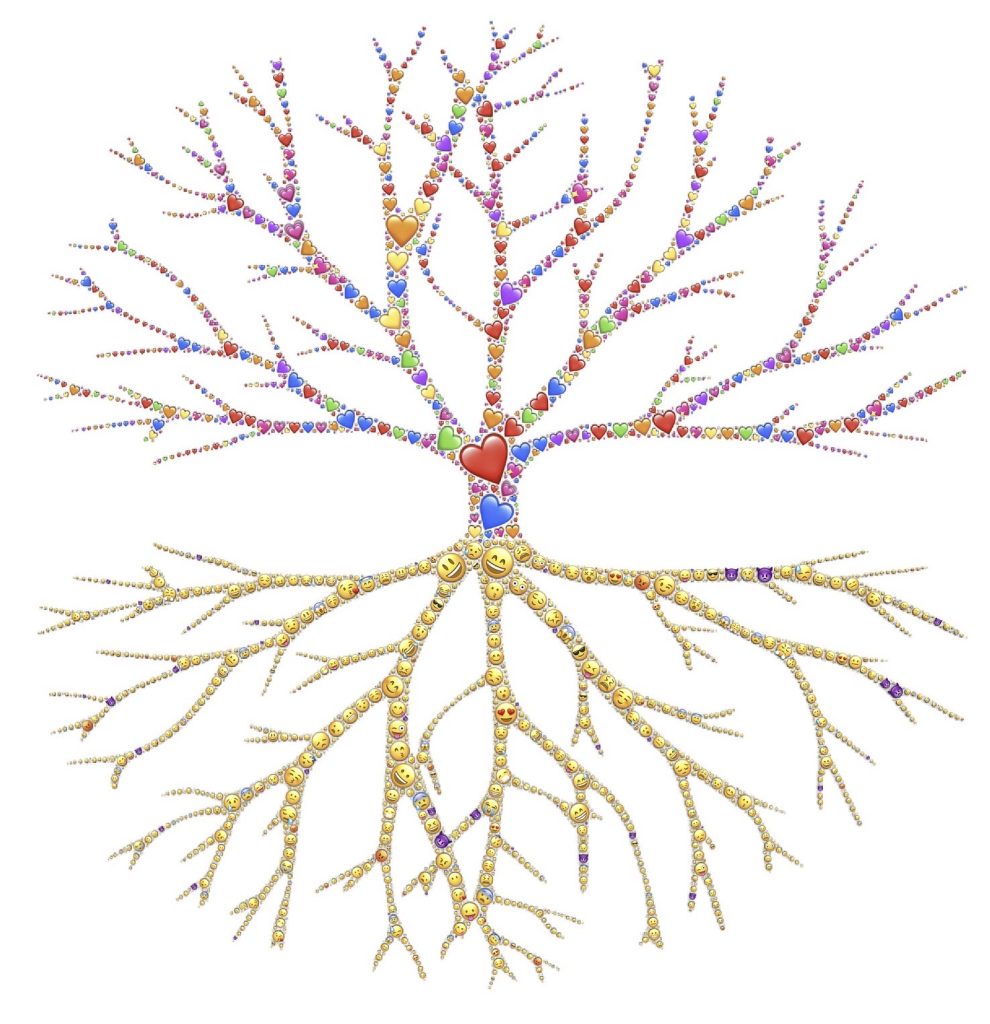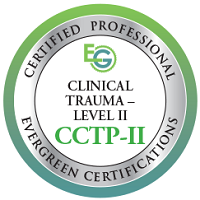Supporting your Growth

According to Hebb’s law, what fires together, wires together. Whatever you repeatedly think, feel, and sense builds new or strengthens existing patterns of neural connections in the brain. The science of neuroplasticity teaches us that our brains are constantly learning and that we can shape our growth in a wanted direction.
Accessing and focusing on positive states can help you to rewire your resilience. Your mind is a powerful tool that allows you to focus your attention like a lens. Perhaps you notice a tendency to focus on losses from your past or fears for your future. While we do want to attend to these painful places, we also need to build our resources so that our hurts or worries do not dominate our world view.
You can build your resources by recalling times that you have felt cared for, safe, or empowered. Mindful movement is also a powerful way to enhance positive feelings and jump-start your neuroplasticity. With ongoing practice, it can become easier to sustain a connection to the buoyancy that resources provide.
This post will help you identify one of the most common barriers to growth and guides you to courageously move toward your potential.
Understanding Neuroplasticity

It used to be thought that the brain only exhibited neuroplasticity, or the capacity to change, during early childhood. However, we now recognize that brain development continues throughout our lifespan. Our brains are malleable and have the capacity to develop new neural connections even as we age.
All of our life experiences form neural networks in the brain. A neural network is a group of interconnected neurons in the brain that fire together and that form the basis of all of our memories. For example, if you are learning a new piece of music on the piano, you are forming a neural network that includes the muscle memory of your hands, the sound of the music, and the feeling that you have in your body as you play the keys. Each time you practice the written music, you reinforce this neural network, and over time, it becomes easier to play. Eventually, you no longer need to look at the musical notes on the page; you can play by memory.
There are several key neurotransmitters that underlie neuroplasticity. Specifically, brain derived neurotrophic factor (BDNF) is a key molecule that enhances the neuronal growth and synaptic changes for all new learning and memories. Dopamine also has the potential to reinforce synaptic plasticity in a positive direction. In addition, gamma-aminobutyric acid (GABA) is an amino acid that helps your nerve cells communicate with the rest of your body.
Importantly, the release of these chemicals can either support positive growth in the wanted direction or they can reinforce fear based habits and behaviors.
Stress-Induced Neuroplasticity

Unfortunately, when we are chronically stressed, the plasticity of our nervous systems can also strengthen the neural networks for unwanted habits, behaviors, and memories. This is referred to as Stress-Induced Neuroplasticity. Our nervous systems are wired to help us to survive and very often we will use the past to attempt to predict the future. Approximately 90 percent of what we think about or perceive about our environment is based upon our past experiences. When events of the past were difficult or traumatic we tend to ruminate on the past and anxiously anticipate the worst for the future.
Post-Traumatic Stress Disorder (PTSD) is a form of stress-induced neuroplasticity that enhances the formation of long-lasting memories that are linked to distressing emotional and somatic experiences. For example, disturbing images, sounds, and smells get wired in with fright or terror. Even in the absence of current threats, events can trigger flashbacks or nightmares. You might suddenly feel flooded with recollections of times when you felt unsafe. These reoccurrences continue to reinforce the fear-based neural network.
Wired by Fear

The underlying pain associated with difficult life events is meant to be felt and, as a result, we recognize that even the most uncomfortable emotions are temporary. However, turning toward fear, shame, loss, loneliness, or helplessness emotions can feel threatening or even annihilating. So, we begin to avoid our pain. Each time we avoid our feelings we unconsciously reinforce the perception that we have successfully escaped a threat. We have survived another day.
Paradoxically, the idea that avoidance has “saved us” stimulates a reward response accompanied by the release of dopamine in the brain. Our urge to avoid our pain further reinforces the belief that those feelings are dangerous. Over time, fear and avoidance become wired into our sense of self, even if it is no longer beneficial for our survival.
Avoidance becomes part of our identity and, when left unchallenged, becomes one of the biggest barriers to our growth.
Rewire Your Resilience

In order to rewire your resilience, you need to challenge your urge to avoid hard things. This doesn’t mean that you should jump in the deep end of the pool if you do not know how to swim. Rather, you grow by building enough positive resources that allow you to gradually face your fears with opportunities to feel successful in the process. It is much easier to engage in a difficult activity when you have enough safety, support, and connection.
For example, imagine that you were once bitten by a dog. You might begin to avoid all dogs or believe that all dogs are dangerous. Perhaps you stop going to the park because you don’t want to risk seeing a dog. The only way to challenge this belief and overgeneralized fear is to eventually move out of avoidance by making contact with a dog. Now, hopefully you choose a nice dog. One that doesn’t bite you. Perhaps you bring a friend along with you so that you are in good company as you face your fears.
Since this is a nice dog, you have now had a positive experience with a dog. This requires that you update your beliefs about dogs. You say, “not all dogs bite” or “some dogs are nice.” Eventually, your fear begins to decrease. You also bring can draw upon the experience you had with the dog that bit you. You know, that some dogs do bite. So you are smart and can make wise decisions about dogs in the future. Hopefully, you find more playful puppies and you open up to a wider range of life experiences. You return to the park and find a greater sense of freedom.
Movement and Neuroplasticity

Sometimes when we have experienced stressful or traumatic life events, we don’t just avoid certain situations or people, we begin to avoid being in relationship to ourselves. We disconnect from our emotions and our bodies. We stop moving, we breathe shallowly, we deaden our aliveness.
Exercise is considered to be one of the most powerful ways to jump-start neuroplasticity and rewire your resilience. Exercise appears to plays a key role in this process because it stimulates the release of dopamine, GABA, and BDNF. A single session of exercise increases cerebellar blood flow, improves working memory and motor skills, and begins to lay down neural pathways that can be reinforced through repeated practice. There is an enhanced window of plasticity immediately following movement that can allow for positive change.
Yoga offers an opportunity to engage in mindful movement to gain the benefits of exercise induced neuroplasticity with a combined emphasis on mental fitness. While exercise alone might stimulate neuronal growth, mindful movement helps to organize and sustain your growth in a wanted direction. Yoga focuses your attention and intention to inspire positive change.
Indeed, reconnecting to your body might feel uncomfortable at first. You may need to move slowly and rebuild a sense of trust. Take your time and get support to move through the barriers of fear, as you gently, lovingly reclaim your birthright of aliveness and embodiment.
From Fear to Love
With practice, you can learn to relate to your pain with equanimity and self-compassion. Equanimity is often translated as “the ability to stand in the middle of all that.” Equanimity involves increasing your ability to stay present and be patient with uncomfortable experiences. I often liken this to riding the waves of change. Yes, you can learn to surf and play in the currents.
This 30 minute practice invites you to ride the waves by exploring the nourishing effects of undulations in your spine from a variety of positions. Explore this practice to awaken your neuroplasticity and rewire your resilience:
Vagal Toning Certification Program with Rewire Therapy Institute

This is why Rewire Therapy has created a self-paced, fully remote online certification program with 20 Polyvagal Theory inspired, guided modules from Arielle Schwartz, plus 1 bonus module that includes 3 exclusive vagal toning guided exercises.
We invite you to enrich your therapy skillset by blending your academic knowledge and clinical experience with Polyvagal Theory and breakthrough vagal toning therapeutic exercises.
A Conversation Between Dr. Schwartz & Tanja Zajdel Founder of Rewire Therapy
Related Posts
- Learn the 6 Rs of Neuropsychotherapy
- Discover Therapeutic Yoga for Trauma
- Why is Embodiment Beneficial for Trauma Recovery?
All images in this post are by 73 year old graphic designer John Hain from Pixabay
About Dr. Arielle Schwartz

Arielle Schwartz, PhD, is a psychologist, internationally sought-out teacher, yoga instructor, and leading voice in the healing of PTSD and complex trauma. She is the author of five books, including The Complex PTSD Workbook, EMDR Therapy and Somatic Psychology, and The Post Traumatic Growth Guidebook.
Dr. Schwartz is an accomplished teacher who guides therapists in the application of EMDR, somatic psychology, parts work therapy, and mindfulness-based interventions for the treatment of trauma and complex PTSD. She guides you through a personal journey of healing in her Sounds True audio program, Trauma Recovery.
She has a depth of understanding, passion, kindness, compassion, joy, and a succinct way of speaking about very complex topics. She is the founder of the Center for Resilience Informed Therapy in Boulder, Colorado where she maintains a private practice providing psychotherapy, supervision, and consultation. Dr. Schwartz believes that that the journey of trauma recovery is an awakening of the spiritual heart.








